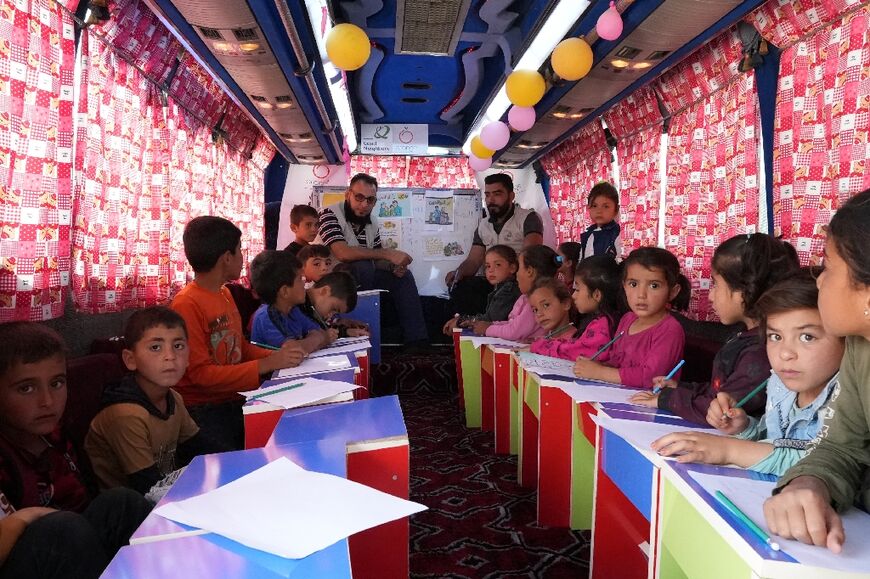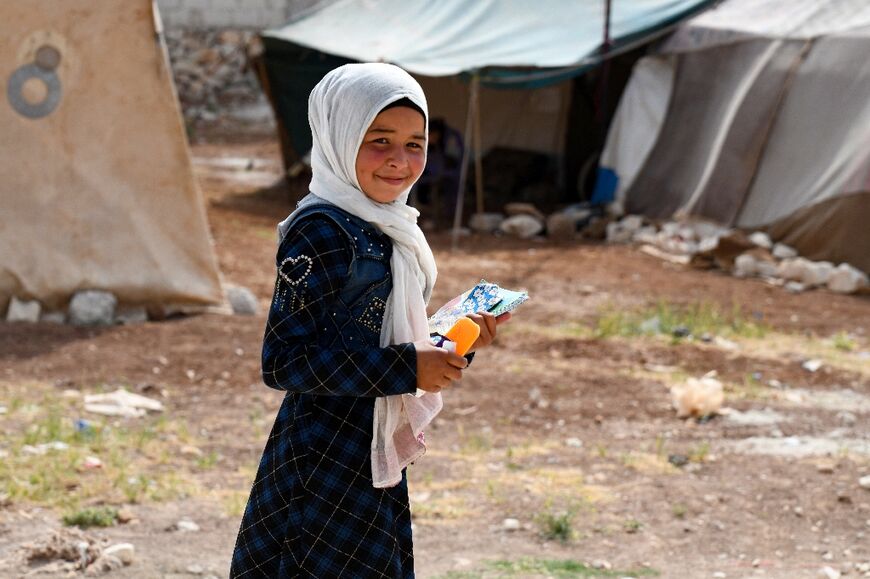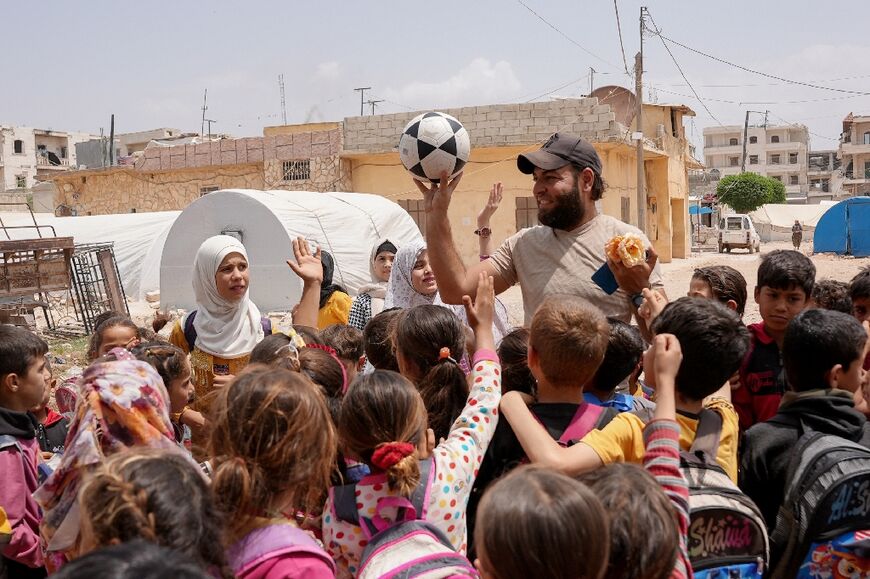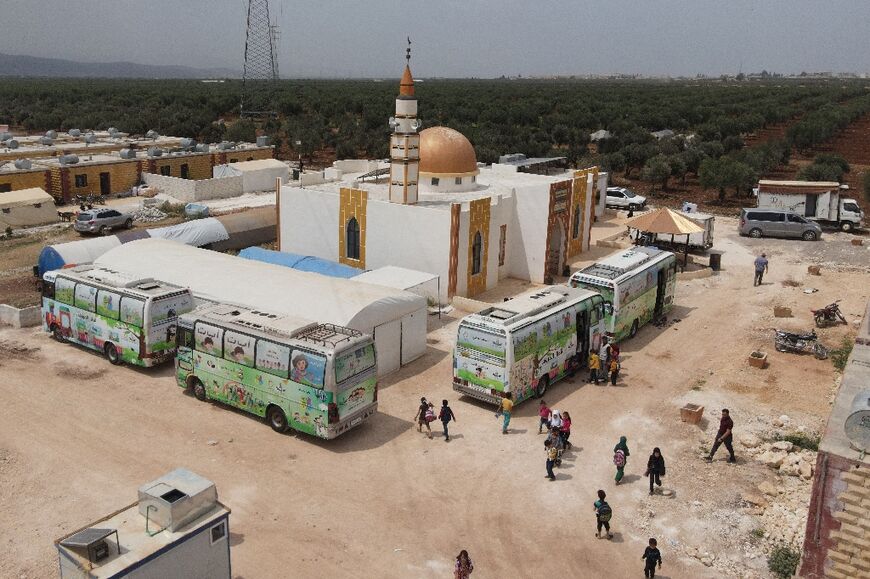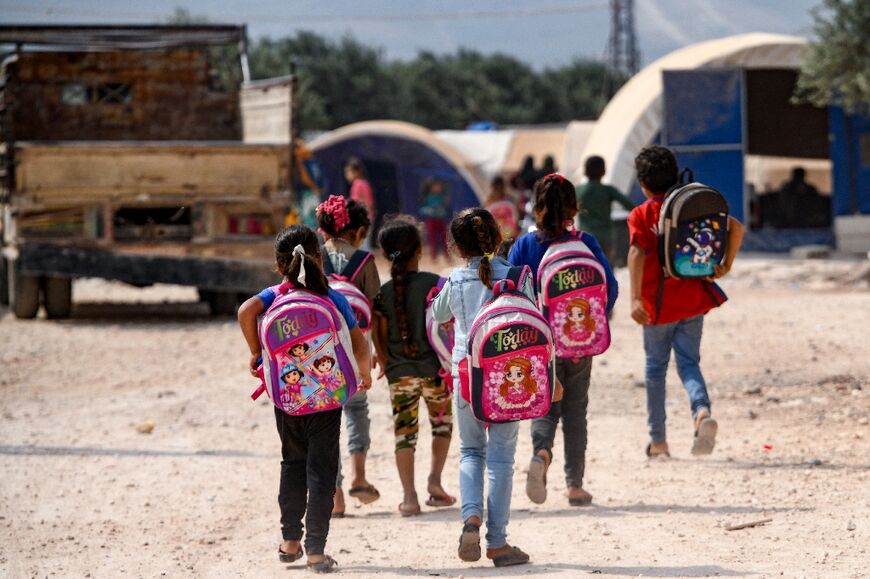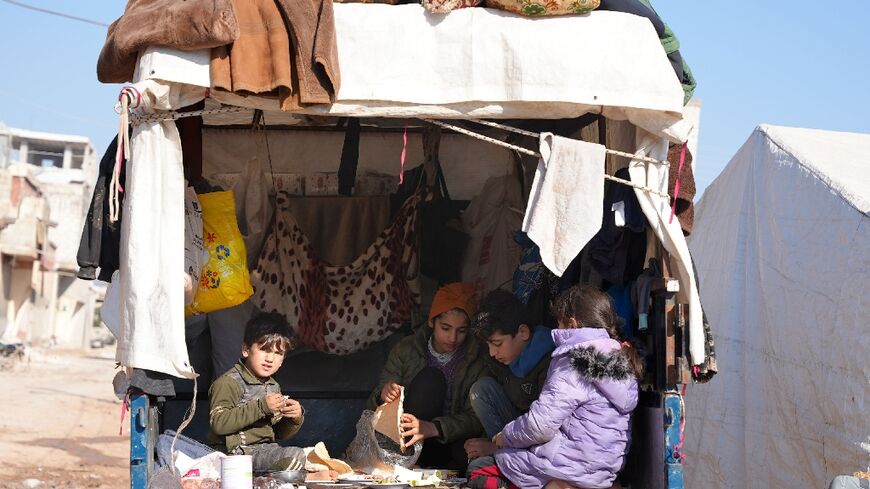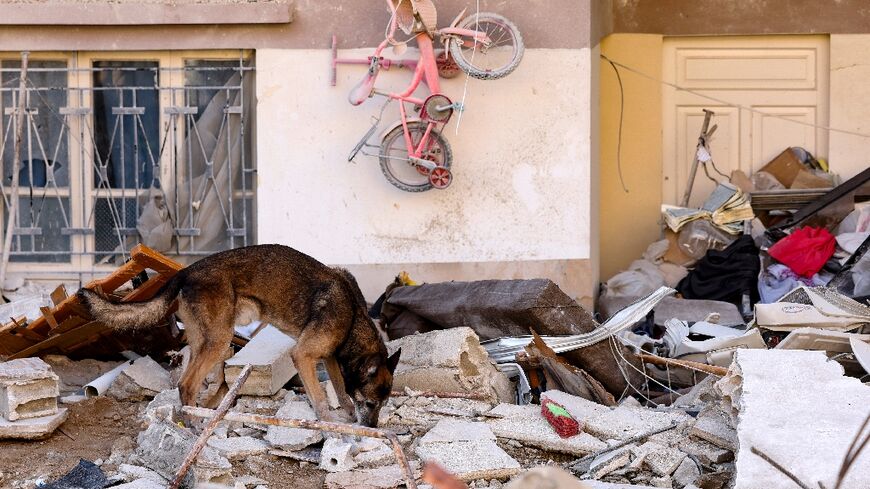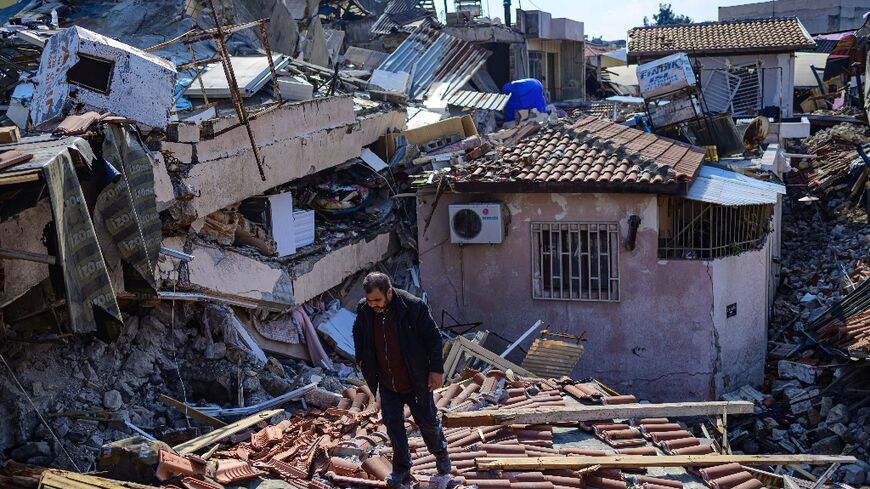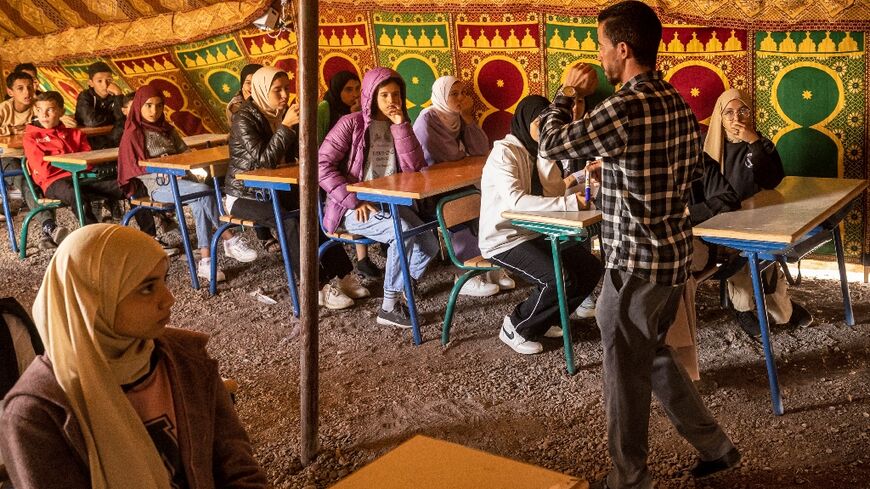Children in quake-hit Syria learn in buses turned classrooms
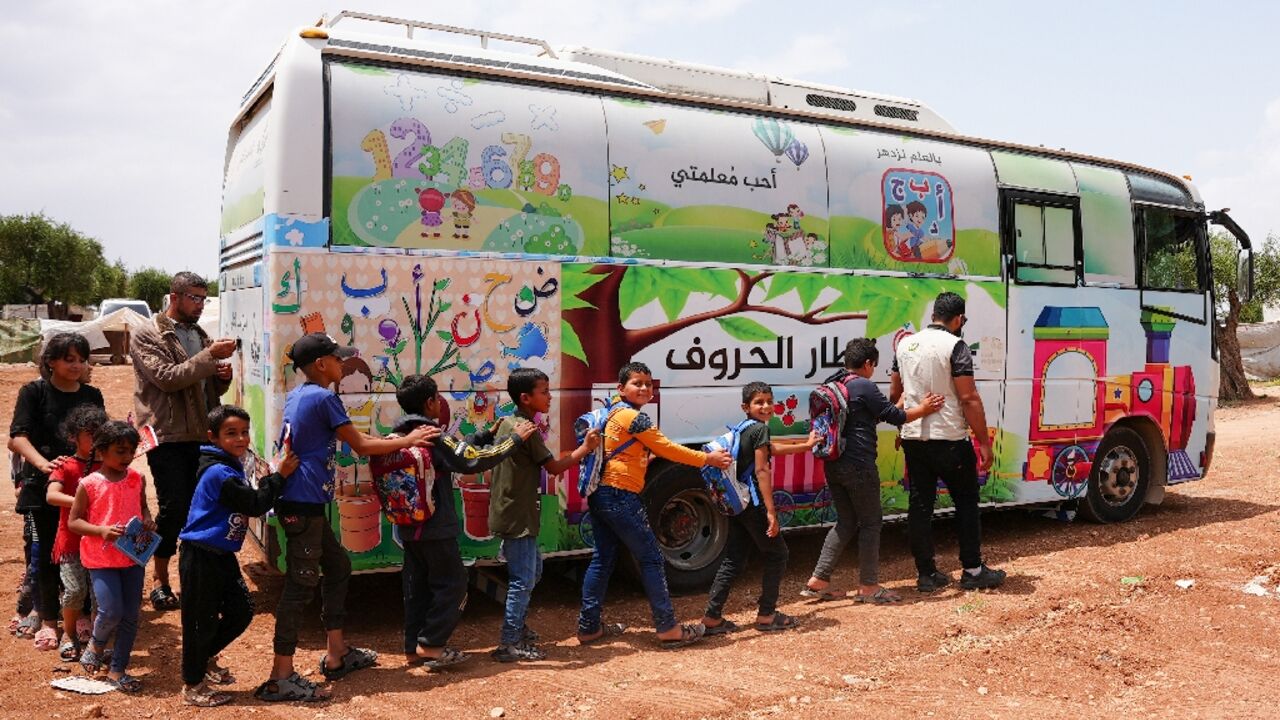
In a dusty Syrian camp for earthquake survivors, school pupils line up and wait for a colourful bus to pull up. Since the disaster hit, they go to a classroom on wheels.
School bags on their backs and notebooks in hand, the children took off their shoes before entering the bus, then sat down along rows of desks fitted inside.
A teacher greeted them in the mobile classroom, decorated with curtains bearing children's designs, before they broke into a song for their English class.
The February 6 quake killed nearly 6,000 people in Syria, many of them in the war-torn country's rebel-held northwest, and also left tens of thousands dead in Turkey.
The Syrian town of Jindayris, in Aleppo province near the Turkish border, was among the worst hit, with homes destroyed and school buildings either levelled or turned into shelters.
"We were living in Jindayris and the earthquake happened... and then we didn't have homes anymore," said 10-year-old Jawaher Hilal, a light pink headscarf covering her hair.
"We came to live here and the school was very far away," said the fifth-grader now staying with her family at the displacement camp on the outskirts of town.
As relief services were set up, she told AFP, "the buses came here and we started to study and learn. The buses are really nice, they teach us a lot."
The travelling classrooms are a project of the non-profit Orange Organisation and service more than 3,000 children at some 27 camps, said education officer Raad al-Abd.
"The mobile classrooms offer educational services as well as psychological support to children who were affected by the quake," he said.
- 'Desperate conditions' -
More than three months after the quake, 3.7 million children in Syria "continue to face desperate conditions and need humanitarian assistance", says the United Nations children's agency UNICEF.
"Almost 1.9 million children have had their education disrupted, with many schools still being used as shelters," it added in a statement this month.
In northwest Syria alone, "a minimum of 452 primary and secondary schools" were reportedly damaged to varying degrees, the UN humanitarian agency OCHA said weeks ago.
"More than 1 million school-aged children need education support and are at risk of being out of school," it said, adding that at least 25,000 teachers are also in need of help, including "mental health and psychosocial support".
On another bus, boys and girls enthusiastically interacted with the teacher, balloons hanging from the ceiling, for lessons that included Arabic, math and science.
Outside in the bare dirt, children sang in a circle and clapped along with the educators.
As the buses left, pulling out through the road running between the camps' tents, adjacent structures and trees, the children yelled out and waved goodbye.
Jawaher's father Ramadan Hilal expressed relief and gratitude for the initiative.
"After the earthquake there were no more schools or anything else," he said. "Even though they wanted to establish schools, they are far away."


